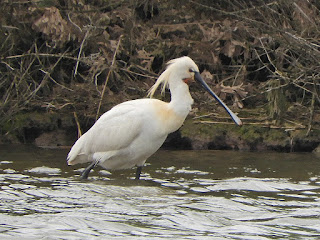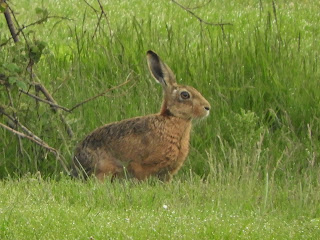I've just returned from a family holiday in Hunstanton, Norfolk from 21 - 28/5/21 which while not a wildlife watching trip in any way did allow me the odd chance for nature spotting. Most of my watching was done in the Hunstanton area though I did manage one brief morning visit to Titchwell. One down side of my visit was the weather as the recent run of wet and windy dross continued and meant that not a single butterfly or dragonfly were seen during my stay.
Migration is all but over for the moment though a few high arctic waders still seem to be on the move. On the 22nd a small number of Grey Plovers were noted but none were seen after this date. Good numbers of Turnstones were present and rather a lot of Sanderlings were still about too. A flock of about twenty Common Scoters were seen distantly and were presumably migrants too. Small numbers of Brent Geese continue to linger and perhaps that's not such a surprise given the weather! Causing panic amongst the gathered waders was an immature Peregrine which circled several times before moving on. I took the chance to wander down to the cliffs and enjoy the comings and goings of the Fulmars at what is their closest colony to us here in Northants. While here a Cuckoo made a flying visit and I managed a record shot as it went past. My favourite birds in the Hunstanton area were two pairs of Grey Partridges which gave good though always distant views on several occasions.
My Titchwell jaunt was a little on the quiet side though it still managed to deliver a few goodies. An adult Spoonbill broke with tradition by being awake, I watched it feeding actively before some birders flushed it. Other leggy birds included a booming Bittern and a Great White Egret. There were very few waders on site other than the breeding Avocets and Redshanks and the Mediterranean Gulls all appear to have moved on. Two Little Terns were a rare treat and I had some distant views of them. Bearded Tits were heard pinging from the reedbed and were the last good birds of my visit.
Not a huge amount of other wildlife was noted and all of it consisted of introduced mammals. Muntjacs seem to be common on the north Norfolk coast and I saw them at several sites. Brown Hares too appear to be flourishing and the area between Hunstanton and Heacham seemed to support a good population.












No comments:
Post a Comment